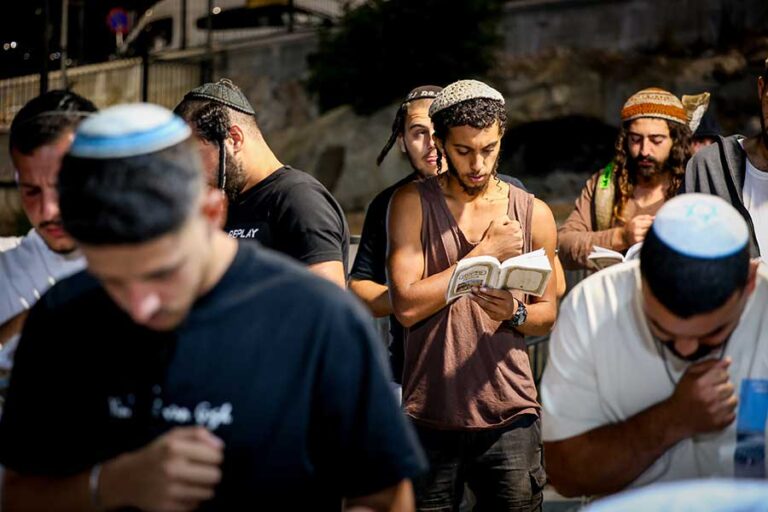This led to a situation where the Torah was in danger of being forgotten. Ezra, who was both a great Torah scholar and a prophet, led the returnees in a revival of Torah observance, including the reintroduction of the public reading of the Torah. It was during this period that the Men of the Great Assembly, under Ezra’s leadership, established the order of the Eighteen Benedictions, including the prayer of Shema Koleinu.
Therefore, the reason why the cantor skips several lines during the interactive repetition of Shema Koleinu during the High Holiday season is because this prayer originally belonged to the daily prayers of the Shemoneh Esreh and was later incorporated into the Selichot prayers for the High Holidays. The skipping of lines is a custom that has developed over time and is done to emphasize the essence of the prayer and its significance during this special time of repentance and forgiveness.
Ezra saw the need to add an (oral) Aramaic translation (Targum) when the Torah was read before them (see Nechemia 8:8) and also to provide them with a set order of the daily Eighteen Benedictions.
In his commentary on the Tur (Orach Chayyim 112), the Bach notes Rashi’s explanation that the benedictions of the Shemoneh Esreh follow a set order that is derived from Scriptural sources, which the Gemara then elaborates. He adds that the Beit Yosef cites the Shibbolei HaLeket who, based on an aggadah (oral tradition), explains that the Men of the Great Assembly established the sequence of the blessings based on the chronological order of the events as described in Seder Olam. Thus the benediction of Magen Avraham (the Shield of Abraham) refers to Abraham’s escape from [Nimrod’s] furnace, Mechayyeh Hameitim [Who resurrects the dead] alludes to Yitzhak’s survival of the Akeidah, and so on. Similarly, each of the Eighteen Benedictions relates to an important historical event of our nation. Hence, the fact that the Men of the Great Assembly “established the sequence” of the benedictions might simply mean that they reinstituted a sequence that existed before but had been forgotten.
The established order of the Eighteen Benedictions as well as the text of all our prayers as we recite them today is listed by Rambam (following Hilchot Milah), and the 16th blessing of the Shemoneh Esreh is identical to Shema Koleinu as found in our Selichot prayers. In fact, the exact wording of the Mishna referred to in Berachot (28b) is that R. Yehoshua states that one prays “me’ein Shemoneh Esreh,” i.e., “like the Eighteen Blessings,” which R. Akiva explains to mean that if one knows the text of the original Eighteen Benedictions, one recites the original Eighteen; otherwise, one recites an abbreviated version.
The Gemara subsequently (29a) explains that “me’ein Shemoneh Esreh” refers to the text of “Havinenu,” [“Grant us discernment”], which concludes with the blessing “Shome’ah Tefillah”; there are also (29b) other prayers, such as Tefillat Haderech [the Wayfarers’ Prayer], all ending with the benediction of “Shome’ah Tefillah.” Thus, we see that the 16th benediction of the Shemoneh Esreh is always appropriately referred to as “Tefillah,” or prayer.
(To be continued)

